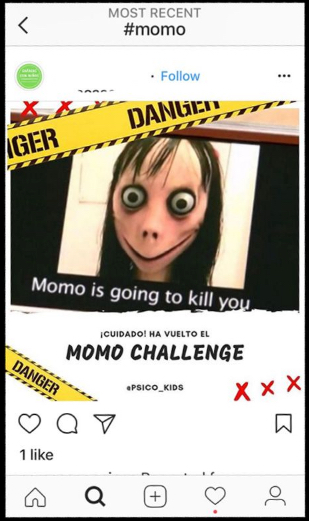Internet hoax
 a.k.a. Internet hoaxes, social media challenges, viral hoax
a.k.a. Internet hoaxes, social media challenges, viral hoax A falsehood deliberately fabricated to masquerade as the truth, Internet hoaxes became more common after the start of social media. As opposed to errors in observation or judgment, or rumors, or April Fools' Day events that are passed along in good faith by believers as jokes, an Internet hoax is a malicious deception.
Historical perspective: In 2019, stories of Momo, a terrifying animated character on YouTube telling kids to kill themselves, raced around the globe but turned out to be an Internet hoax according to The Atlantic. Local news amplified the story. Kim Kardashian West shared it with her 129 million Instagram followers. Parents in the U.K. and U.S. fell for it in droves, just as last year parents fell for it across Latin America. The Momo story amplified all the worries parents already had about the internet. It spread so widely because of a moral panic, fueled by parents’ fears in wanting to know what their kids are up to.
The Momo scare follows a familiar pattern, said The Washington Post. Like the Tide pod challenge, a rumor that kids were being encouraged to eat potentially lethal detergent pods, or the BirdBox challenge, it went viral in spite of plentiful details that didn’t hold up. It’s not surprising that a scare like this would sweep the globe said Vox.com. We’ve been primed for this by lots of similar stories. The turning point was the creepy internet meme of Slender Man. In the summer of 2014, two 12-year-olds lured a fellow sixth-grader into the woods and stabbed her 19 times, allegedly in hopes of conjuring a dark, mythical being known as the Slender Man. That an internet meme could inspire an actual murder shows how internet culture could warp belief systems.


Edit Word